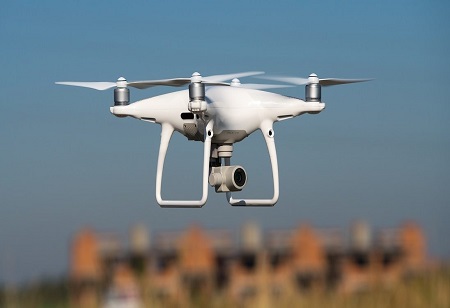
Technology has rapidly changed how surveying and loss adjustment is carried out, and it is still coming up with more innovative means to streamline the entire process, the evolution of the internet and other industries has allowed these two professions to grow in tandem.
The surveying and claim adjustments or loss adjusting is a rigorous process yet it must be carried out and compensated appropriately in a timely fashion. Here is how various technologies aid the insurance industry.
Video Communication
Prior to technology, the process was entirely manual the surveyors were to visit the site and investigate the damage manually with a paper full of prerequisites to be marked off, this sometimes required visits by multiple experts and would nearly take forever to deploy the payout to the victim. And more often than not, there would be legal disputes over the nature of the events.
But with video calling, the majority of this entire process was taken online and allotment of specialists became a lot easier.
For example, in the event of a car accident, the surveyor/claim adjustor can be called immediately, thereby providing them with real-time data which can be used for initial claims, if the specialist has to travel all the way to the site of the incident, it would be a time-consuming process. Another factor a lot of studies have shown is customer retention, it is seen that insurance providers whose surveyors operate via video call are shown to have 90% customer retention.
Data Analytics And Tools
Damage by natural calamities or “act of god” as it is usually called is a difficult task for even the most experienced assessor and time is not something that is not on anyone’s side, this before technology was done on foot assessing the damage on everything their vision can provide. And it would at most take months to even come to a decent assessment.
But now UAVs (popularly called drones) have entered space and they are deployed to assess large-scale damage and this has changed the landscape of how the industry carries out surveying and collecting data.
Damages caused by natural disasters like hurricanes and earthquakes are always hard to assess to even arrive at the initial compensation figures. But these accidents have previously happened and there is a lot of data already recorded on this, so by the application of advanced data analytics, it is relatively easier to estimate the damage impact by historical data and the loss adjustors can arrive at a suitable compensation figure and immediately provide financial relief to the impacted area.
This methodology is carried out in case of floods, hurricanes and earthquakes in the eastern part of Asia, as it is a periodic recipient of natural disasters.
Smartphone Apps
It was a norm to repeatedly call your agent for information on your claim status and being anxious all the time was a given. And numerous visits to your agent’s office for procedures time were common.
Along with video communication with your agent, there is an abundance of apps for these purposes on the smartphone app stores by the insurance providers. One can easily upload the necessary documents along with pictures of the damage to the property, this process eliminates the need for visits and the time limit worry is nonexistent as it is just clicking a picture or filming a video, as most damages have to be reported immediately to avoid fraud or inflation of damage.
The entire claim process can be tracked on your app without the need of calling up the agent to the process every time. Questionnaires are also sent on the said app which will help the insurer, surveyor and the claim adjustor.
IoT Enabled Infrastructure
The smartphone revolution and ease of internet access have created new markets and technologies, internet of Things (IoT) is one of those, and household appliances are automatic or semi-automatic. Automobiles have their own ecosystem which exchanges data with third parties. This information/data provides valuable insights to the loss adjustor.
For example, in the case of a truck accident, the sensors would be triggered upon impact and airbags would be deployed, this data would be stored in the software ecosystem of the vehicle, and this data can be used to assess the time of accident, impact of damage with pinpoint accuracy. Previously this process had to be carried out on the word of the victim or witnesses if any of them were present, this used to yield highly inaccurate information resulting in a hard time for the surveyor and consequently, an ambiguous amount would be compensated.
Claim from insurance is always most sought out in times of distress. And it is highly reliant on the cooperation of a lot of parties to get suitable monetary returns on their premium, it is of paramount importance for all the involved parties to communicate and act immediately, and the above technological assistance is a few of them that would ease the multifarious process. This goes to show how the importance of having a robust technological backbone can come through even in the most unlikely of events.
We use cookies to ensure you get the best experience on our website. Read more...